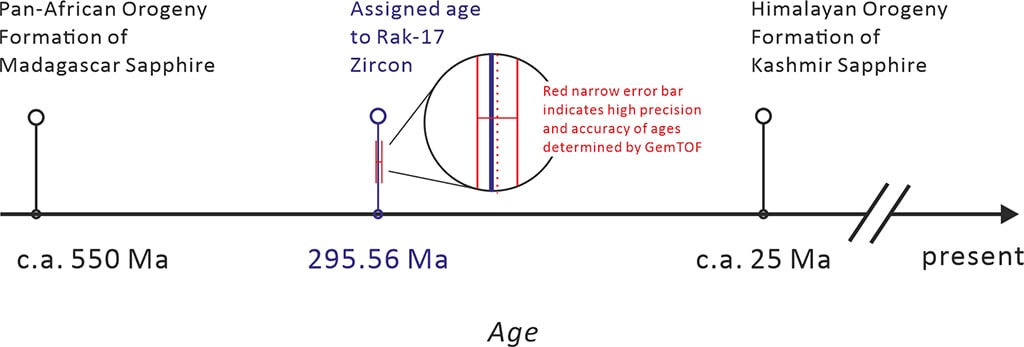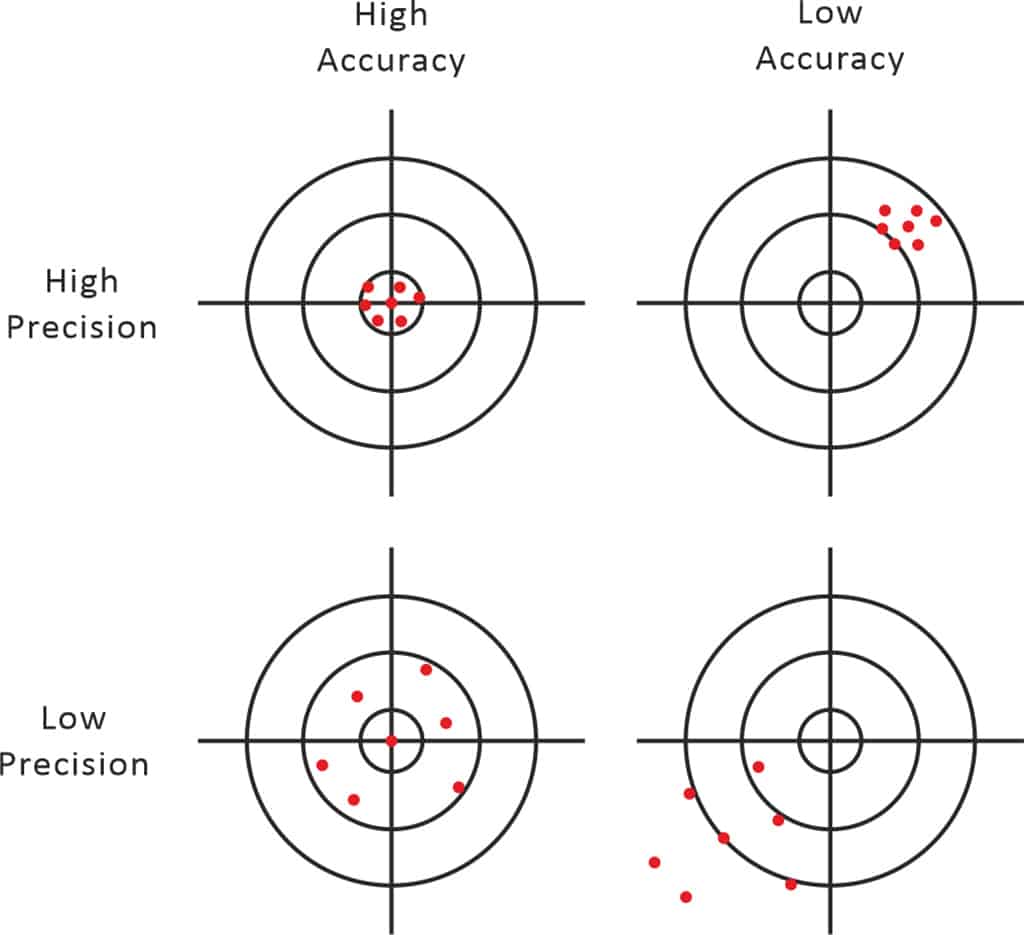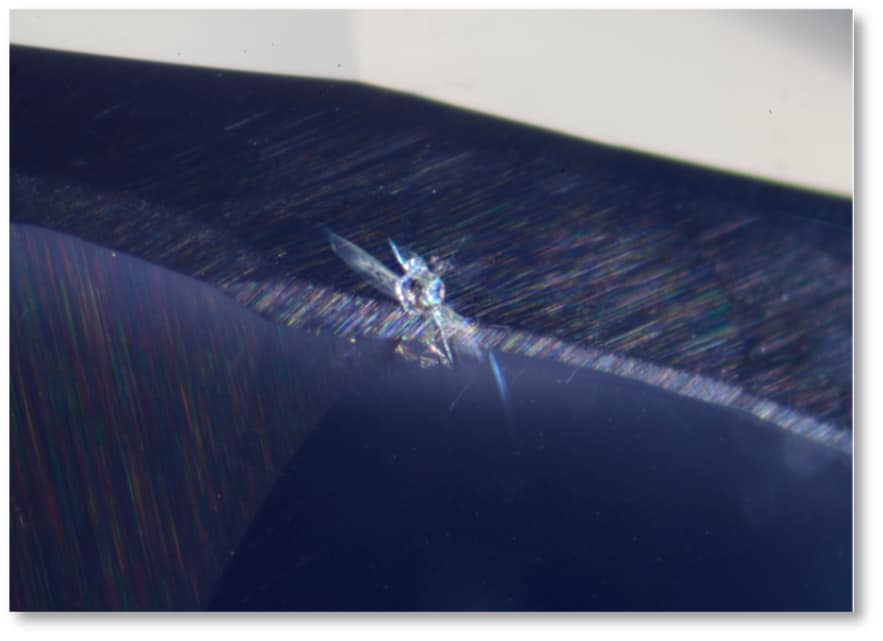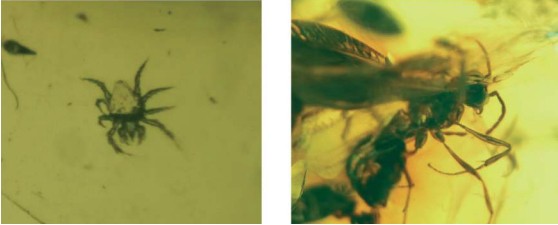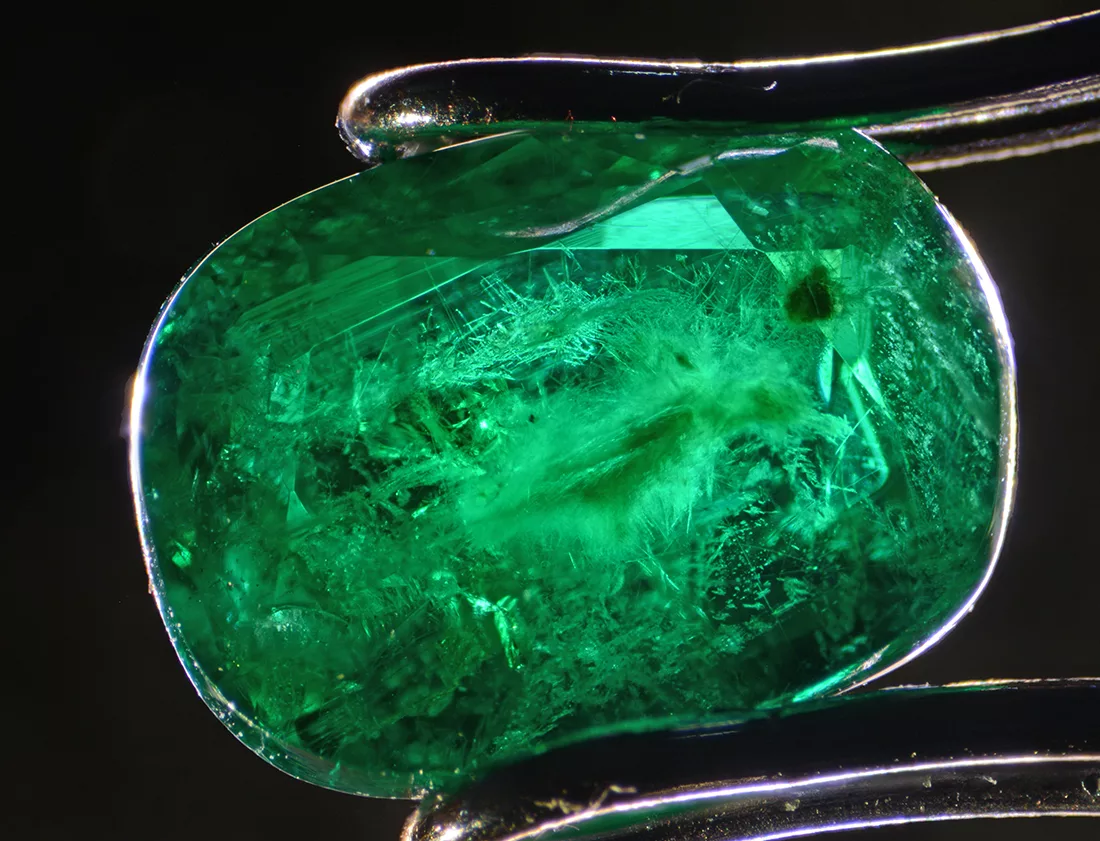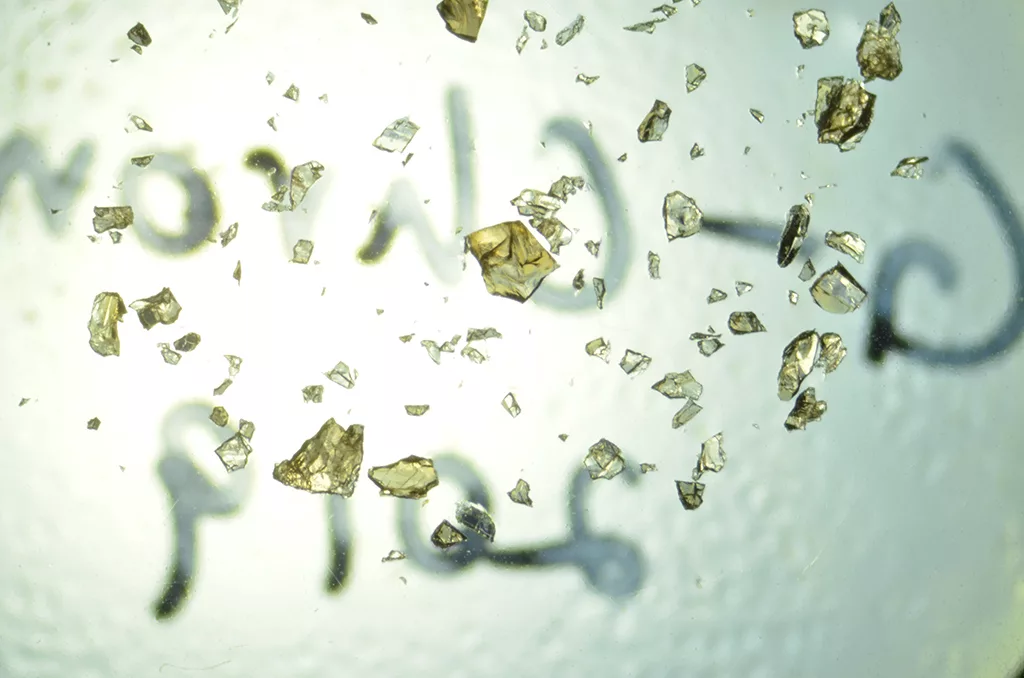
Gemtof successfully passed G-Chron 2019 proficiency test on zircon U-Pb dating
by Dr. H.A.O. Wang, first published in Facette 27 (June 2021)

The quality and consistency of analytical data is important for gem labs in order to provide replicable results to gemmologists over a long period of time. In addition, the accuracy compared to internationally recognised standards allows us to perform inter-lab comparisons or track instrument performance and troubleshoot problems proactively. Following this guideline, SSEF participated at the end of 2019 in the proficiency test G-Chron 2019, set up by the International Association of Geoanalysts (IAG, http://www.geoanalyst. org/g-chron/). This test was specifically devoted to the U-Pb dating of minerals (especially zircon) in geological materials.
In an internal report, distributed by IAG in 2020, SSEF successfully passed this internationally coordinated test. This confirms the suitability and confidence of the age dating method currently applied in our lab on zircon inclusions in various gems, e.g. sapphire and ruby. With an accurate zircon formation age, gemmologists are able to deduce an estimated formation age of the host gemstone. This information may well support gemmologists in origin determination. As an example, it is thus possible to clearly distinguish between sapphires from Kashmir (formed ca. 25 million years ago, due to the Himalaya orogeny) from similar-looking sapphires from Madagascar (formed ca. 550 million years ago, due to the Pan-African orogeny).
Round-Robin Blind Test with ‘Rak-17’ Zircon
In this first round-robin blind test, high purity zircon samples were dispatched at the end of 2019 to more than 60 laboratories worldwide, all of which routinely do U-Pb dating of zircons. The name of the sample ‘Rak-17 Zircon’ used for this international test refers to the site of sampling near Rakke Compass, 2.3km south of the town of Stavern (Norway), where about 150 kg of rock material was collected back in 2017. After a complex preparation procedure, which included milling, sieving, magnetic separation, heavy liquid separation and acid leaching, about 630 g of high purity zircon fragments were ready to be shipped to the laboratories participating in the G-Chron 2019 test.
We received a sample of about 100 mg as <1mm fragments which were then embedded in epoxy resin and polished (Figure 1) at the University of Basel. In the following two months, three GemTOF operators analyzed the ‘Rak-17’ zircon samples on six separate days, subsequently applying our SSEF in-house developed age dating protocol for zircons, the same as used in all our age dating calculations for zircon inclusions in gemstones. In total, our results were summarised from 29 analyses on this sample in order to balance minor fluctuations in instrument performance due to different operators.
Age dating at SSEF based on international standards
Our reported age for ‘Rak-17’ is 296.9 ± 2.18 million years (mean ± one standard error). In other words, this means that the age of the zircon is probably between 294.72 and 299.08 million years based on the radiogenic isotope ratio of 206Pb and 238U measured by GemTOF. Based on the final report, a reference age of the sample was assigned to be 295.56 ± 0.21 million years (mean ± one standard error), which was determined by chemical abrasion isotope dilution thermal ionization mass spectrometry (CA-ID-TIMS). This method is considered to be one of the most accurate methods for U-Pb dating of zircon, although its analytical procedure is time-consuming and complicated and only dedicated laboratories can conduct such analysis.
By comparing both results, we can say that the age determined at SSEF agrees very well with the internationally recognised age of the ‘Rak-17’ zircon sample. Secondly, our age dating provided a narrow error range, as illustrated in Figure 2. This indicates that our measurement was both precise and accurate. To understand the difference between the terms precision and accuracy, see Figure 3.
SSEF successfully passed international G-Chron test
We are very proud to confirm that our GemTOF instrument successfully passed the international proficiency test G-Chron 2019. This is a major step in our analytical excellence, and shows the accuracy of SSEF’s U-Pb dating procedure on zircon inclusions. It allows us to deliver highly confident age dating results to our gemmologists, assisting them in their task to determine the country of origin of gemstones. But foremost also to communicate such gemstone ages to our clients and their customers with a special letter attached to the gemstone report, thus adding a further fascinating facet to the story and provenance of such a gemstone.
For the near future, we look forward to developing U-Pb dating protocols for further mineral inclusions, which are additionally found as beautiful encounters when looking into gemstones with a microscope.
